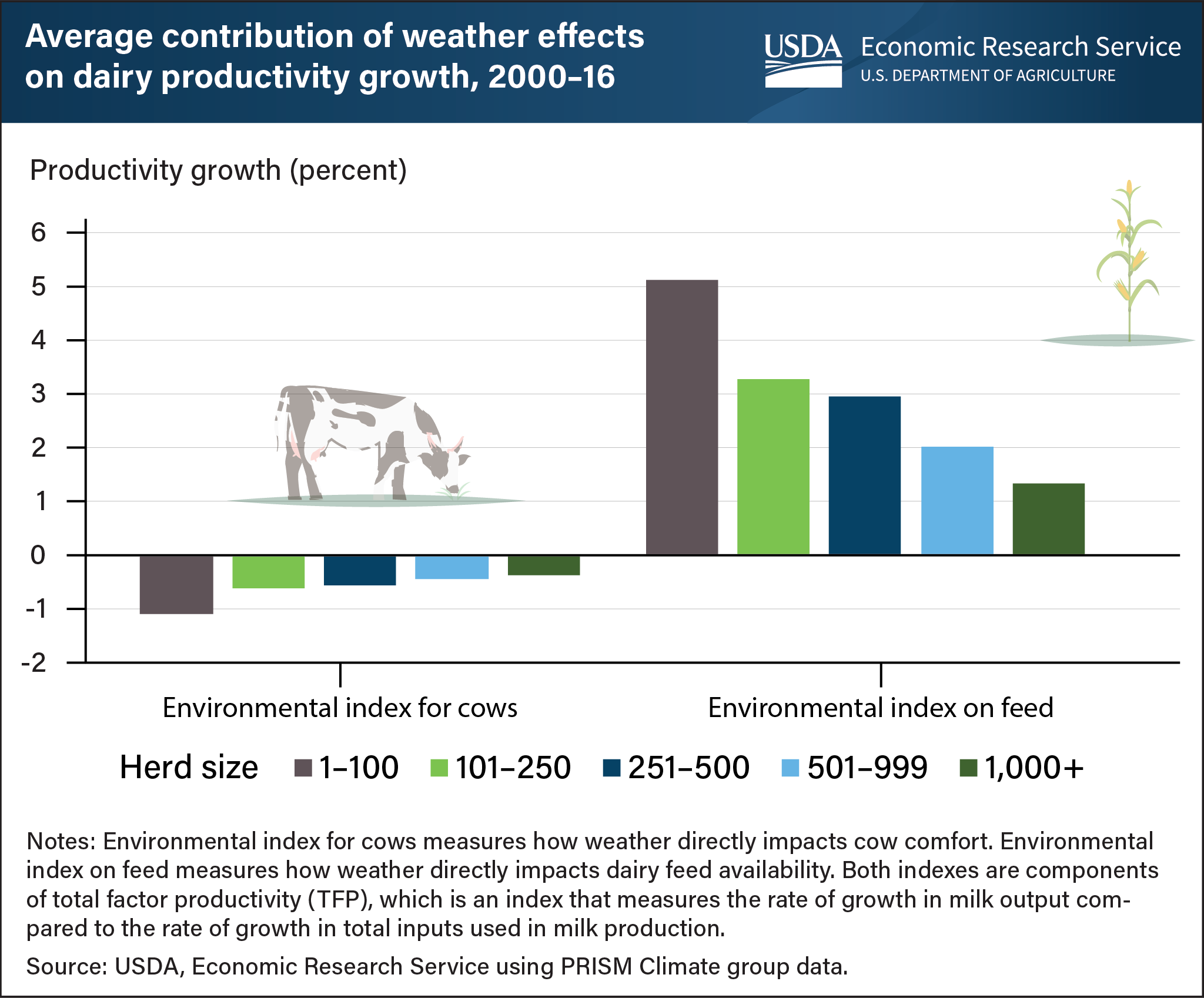Extreme hot and cold temperatures impacted productivity growth across U.S. dairy sector from 2000 to 2016
- by Eric Njuki
- 4/11/2022

Extreme temperatures can have a negative impact on dairy cow production, as well as the growth and development of crops used for feed. New research from USDA, Economic Research Service calculates how often during a calendar year temperatures are within the optimal range for a dairy cow's maximum productivity (41–77°F), as well as the growth and development of feed crops (50–86°F), such as corn, sorghum, barley, and oats. The number of days outside these optimal temperature ranges are used to predict the effects of extreme temperature on dairy cows and feed crops. Findings indicate that all herd-size classes in several States experienced reduced growth in total factor productivity (TFP) because of extreme temperatures. TFP is an index that measures the rate of growth in milk output compared to the rate of growth in total inputs used in milk production. On the other hand, extreme weather in most States did not cause a decline in TFP by limiting feed availability. Farmers can use adaptive strategies to lessen the impacts of unfavorable temperatures on cows, which include building shade structures, installing cooling and heating systems, altering the nutrient mix, and raising heat-tolerant breeds. Similarly, farmers may resort to purchasing feed from other regions of the United States in response to adverse weather conditions that impact feed crop development in areas where dairy operations are located. This chart was drawn from the Sources, Trends, and Drivers of U.S. Dairy Productivity and Efficiency report, published in February 2022.

